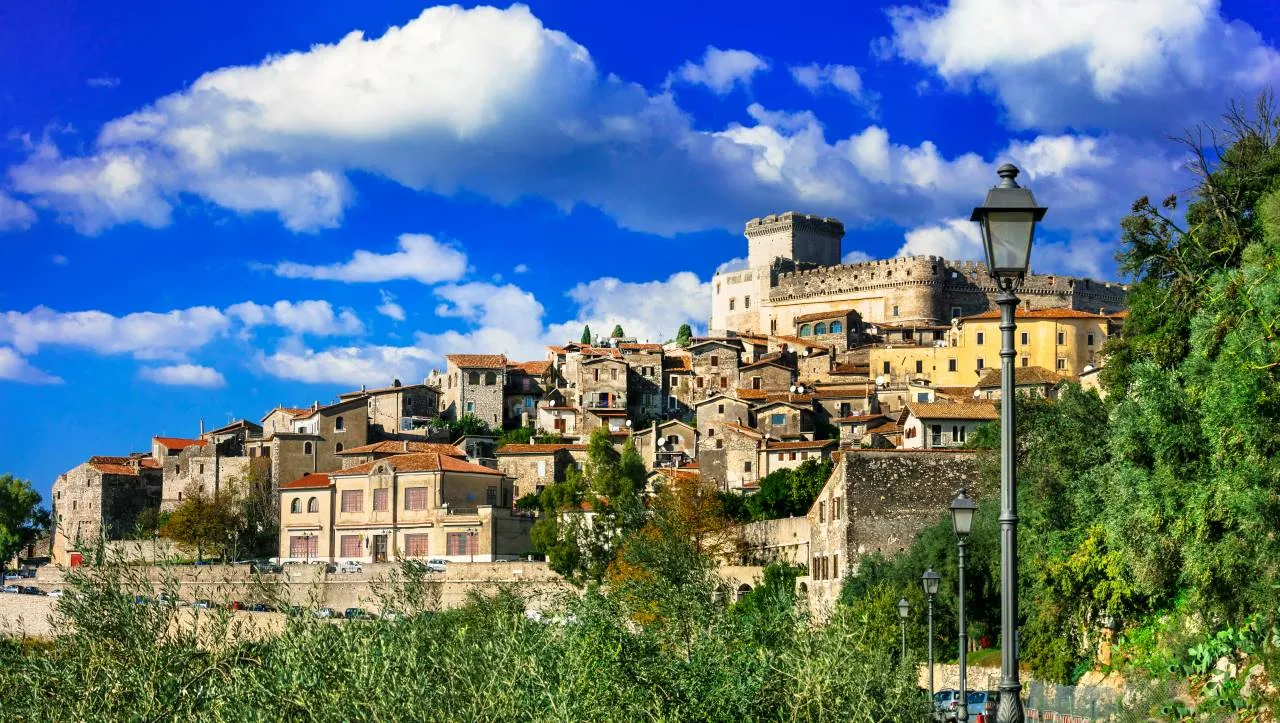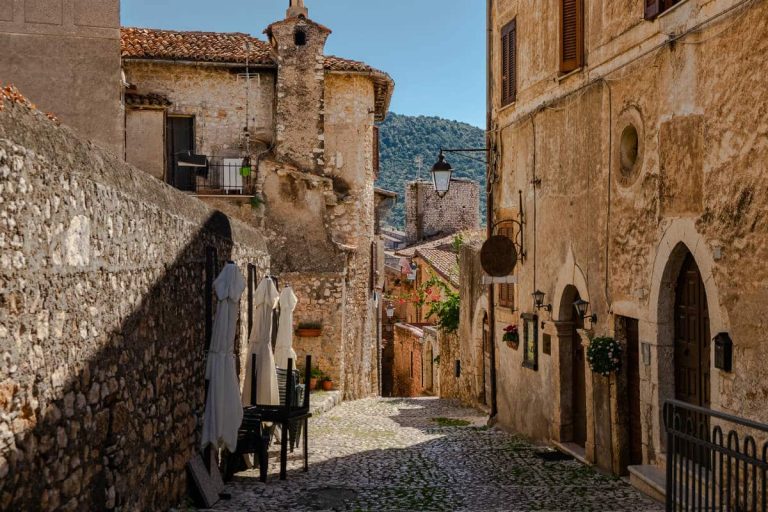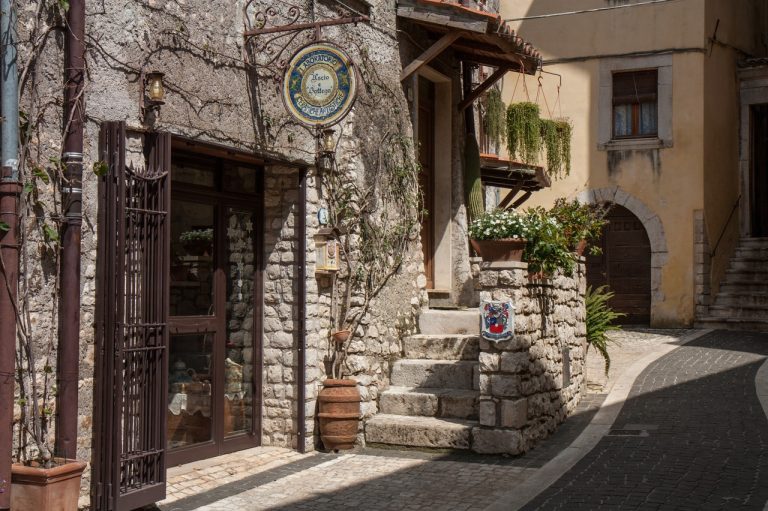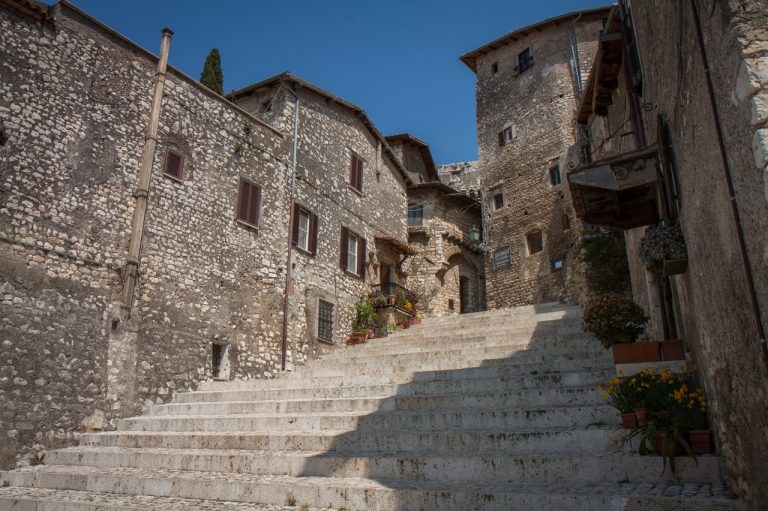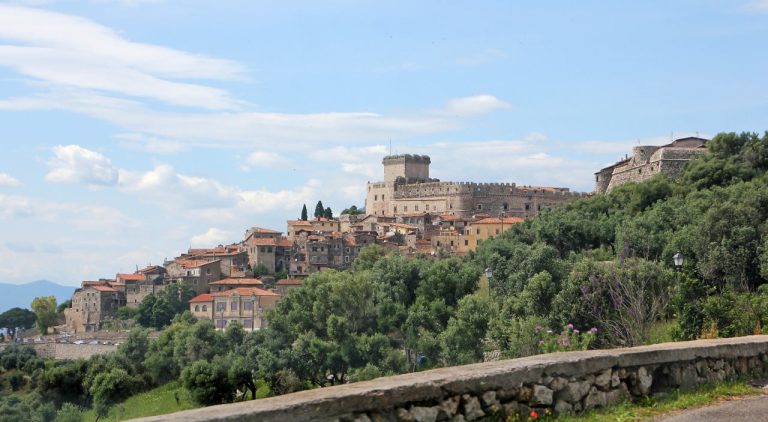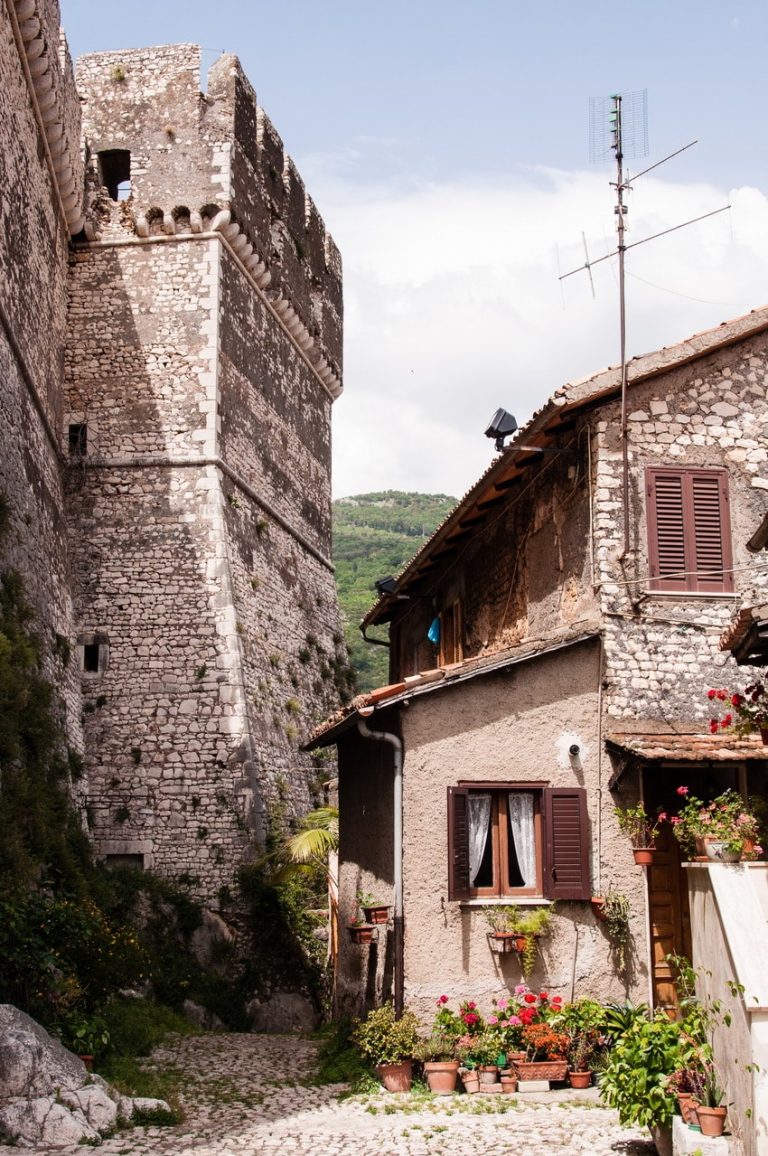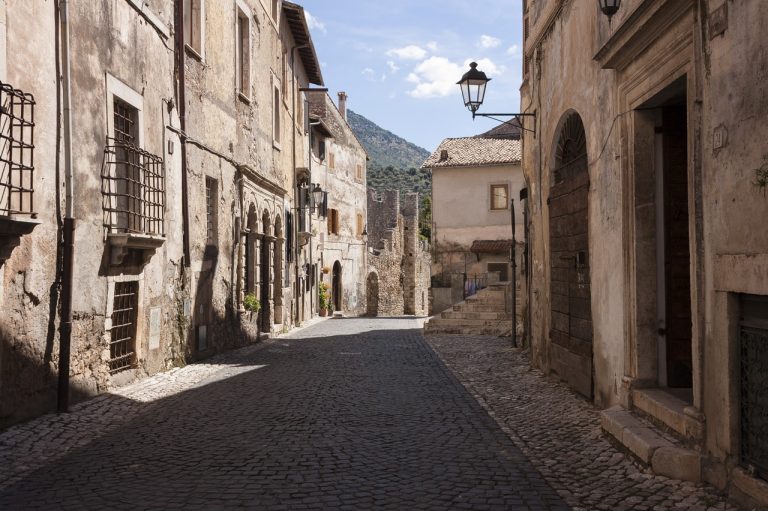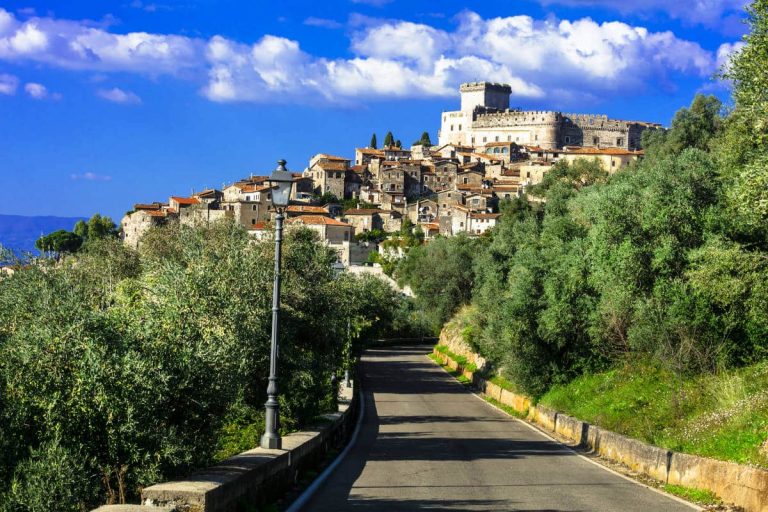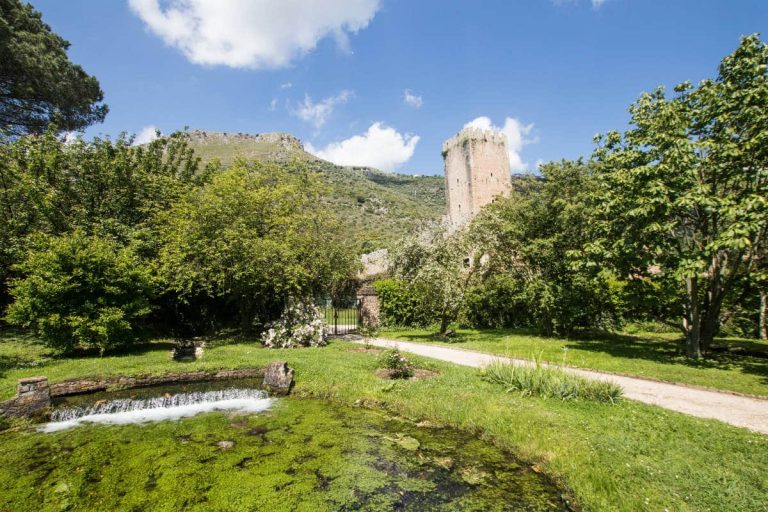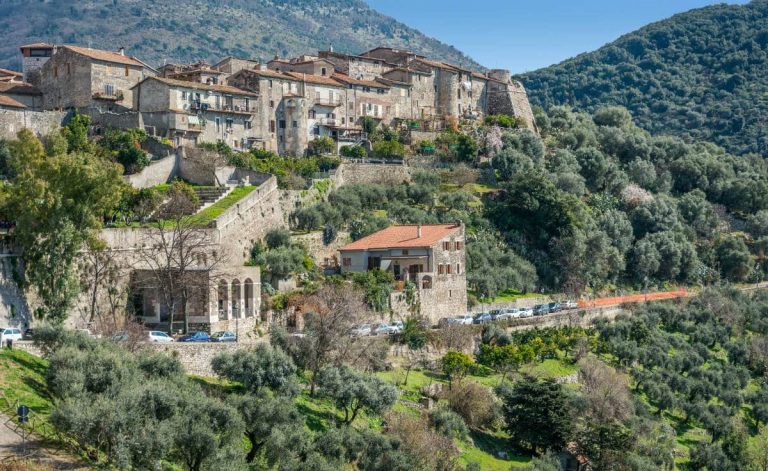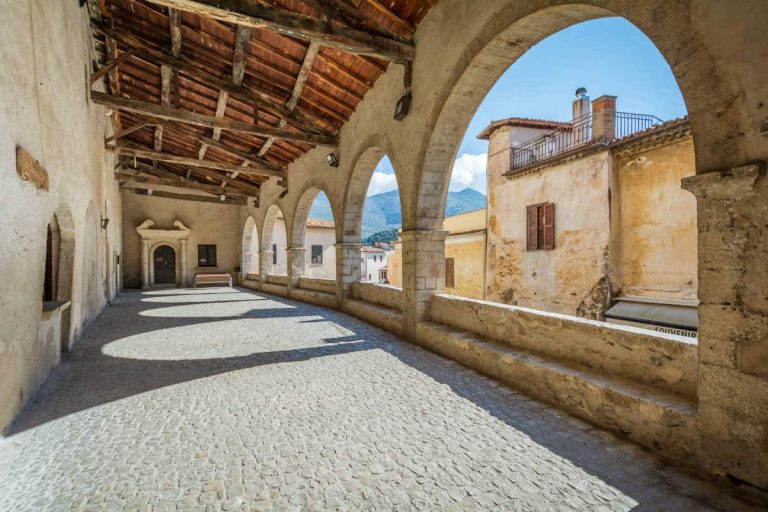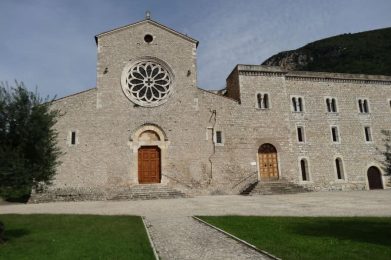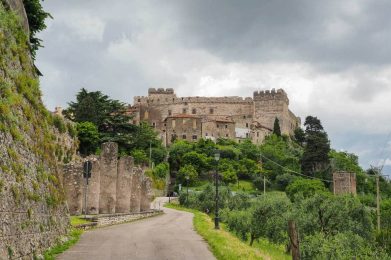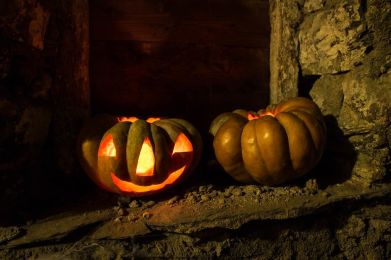Stepping through the mighty walls that encircle the village of Sermoneta, one is catapulted into a fascinating past. Narrow cobblestone streets lead to unexpected discoveries, such as the Loggia dei Mercanti, an elegant arcade that once housed trade and is now a gathering and socializing place. Walking through the historic center, it is impossible not to be fascinated by the ancient limestone dwellings, loggias, and characteristic tower-houses that dot the urban landscape.
The Caetani Castle: Guardian of Stories and Legends
Dominating the entire village, Caetani Castle is an imposing testimony to Sermoneta's feudal history. Built in the early 13th century by the Annibaldi family and later expanded by the Caetani, the castle offers a fascinating journey through time. Inside, the Pinte Rooms fascinate visitors with frescoes from the Pomarancio school, while the dungeons reveal ancient inscriptions and graffiti left by prisoners. The drawbridge, moat and mighty defensive walls tell stories of sieges and battles, making the visit an engaging and educational experience.
Religious treasures in the heart of the village
Sermoneta boasts a rich religious heritage, visible in its historic churches. The 13th-century Cathedral of Santa Maria Assunta captivates with its imposing bell tower and richly decorated interior. The Oratorio dei Battenti, located inside, offers a glimpse into local religious traditions. The Church of St. Joseph, dedicated to the village's patron saint, and the Church of St. Michael the Archangel, with its origins dating back to the 12th century, add further depth to Sermoneta's spiritual heritage.
A short distance from the town, the Abbey of Valvisciolo represents a place of peace and reflection. Founded in the 8th century by Greek monks and later rebuilt by the Templars in the 13th century, the abbey combines Romanesque and Gothic architectural elements. The cloister, inner halls and church offer an atmosphere of serenity, inviting visitors to take a meditative break away from the daily hustle and bustle.
Local traditions and flavors
In addition to architectural wonders, Sermoneta offers a complete sensory experience. The village streets are dotted with artisan stores where you can discover and purchase typical local products, such as the famous wine cookies, traditional sweets that tell stories of recipes passed down through generations. Cultural events and festivals enliven the village throughout the year, offering visitors the opportunity to immerse themselves in local traditions and participate in celebrations that unite the community and welcome guests with warmth and hospitality.
Why visit Sermoneta?
Sermoneta is not just a tourist destination; it is a journey into the beating heart of Italian history, culture and traditions. Every corner of the village tells a story, every stone has a secret to reveal. Whether exploring the ruins of an ancient castle, admiring sacred works of art, or savoring local culinary delights, Sermoneta promises a rich and rewarding experience. For those seeking an authentic corner of Lazio, far from the beaten tourist destinations, this charming village represents a discovery not to be missed.

